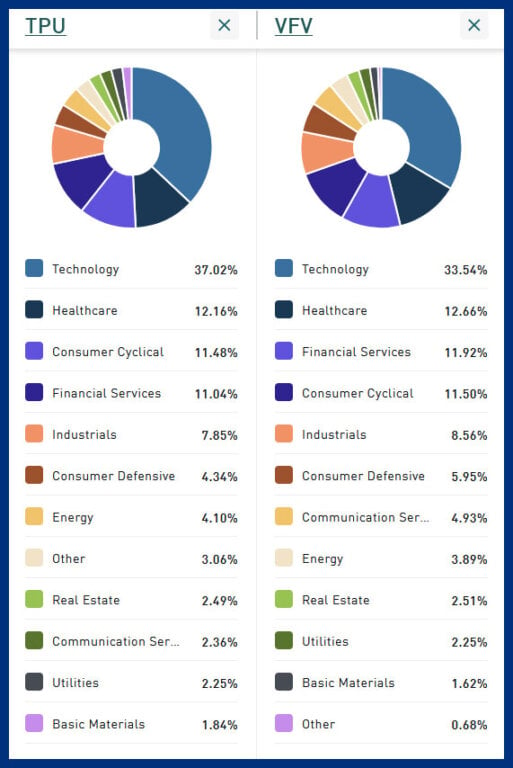Is VFV a good buy? What about other US ETFs with even lower fees?

Of course, investing in these ETFs means you'll lose 15% of your dividends to withholding taxes. For many, however, it's a worthwhile trade-off to gain access to the most important US currency index—one that, according to the Standard & Poor's Indices Versus Active (SPIVA) report, has outperformed 88% of all major US currencies. for the past 15 years.
But hold on, these aren't your only options. And here's something you might not know: it's not that expensive. Just as choosing no-name store brands can offer the same quality at a lower price, some ETF managers have been quietly releasing US equity index ETFs that come with even lower fees. Here's what you need to know to make an informed choice.
Examining low-cost alternatives to well-known S&P 500 ETFs—such as VFV, ZSP and XUS—leads us to a few lesser-known but highly competitive options: the TD US Equity Index ETF (TPU) and the Desjardins American Equity Index ETF ( DMEU) ). Launched in March 2016 and April 2024, respectively, these ETFs track the Solactive US Large Cap CAD Index (CA NTR) and the Solactive GBS United States 500 CAD Index. “CA NTR” stands for “net return,” meaning the index accounts for after-tax returns, providing a more accurate measure of what Canadian investors can take home.
Essentially, these indexes provide exposure to US equities without the licensing fees associated with the S&P 500 brand name index, which is a huge advantage in keeping costs low. You can think of Solactive as the RC Cola of the index industry, and S&P Global as Coca-Cola, and MSCI as Pepsi.
For TPU, the management fee is set at 0.06%, with a total MER of 0.07%. DMEU charges an administration fee of 0.05%. As it has not traded for a year yet, its MER is yet to be determined but is expected to be competitively low.

In terms of portfolio composition, there is little difference between these ETFs: VFV, TPU and DMEU. Look at the top 10 holdings, and you'll see the weights of these ETFs reveal similar exposures, with only slight deviations. Similarly, when comparing the industry share between TPU and VFV, they are closely aligned, showing a consistent approach to holding the broader US equity market. However, looking a little deeper into the technical aspects, the indices tracked by these ETFs—the Solactive indices for TPU and DMEU versus the S&P 500 for VFV—show significant differences.
The S&P 500 is not as straightforward as it may seem, however. It not only tracks the 500 largest US stocks. Instead, entries are at the discretion of the committee, subject to eligibility criteria including market capitalization, liquidity, social mobility and positive returns. This makes it stronger and more efficient than you might think.
In contrast, the Solactive indicators used by TPU and DMEU are negligible. They simply track the 500 largest US stocks by market capitalization, with a few additional screening criteria. This direct approach lends a passive element to these indexes compared to the S&P 500.
Source link



